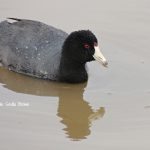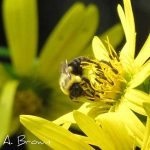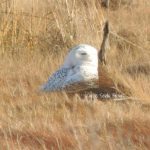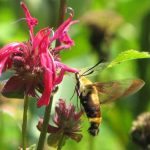Ever have the opportunity to spontaneously drop everything and go away for a wonderful weekend without your computer?
I had that thrill this past weekend when my dear friends Kathy and Hugh invited us to spend the weekend with them at their new (to them) Cape May home and wildlife garden. Oddly, I have quite a history with this wildlife garden, as it used to belong to my friend Irma McVey, but this was the first time I had been able to visit since Kathy and Hugh purchased this property after Irma’s passing.
When we first arrived at their house, we got to spend a delightful afternoon at the new Cape May Brewing Company tasting some of their delicious offerings, and then we headed out to see a spectacle that I have wanted to see for many years.
Every year from the beginning of August until the first week of September the Purple Martins gather into huge flocks before making their journey south in huge migratory flocks. Cape May, NJ residents also gather in flocks to watch these huge gatherings of these birds at the Maurice River bridge. For observant nature watchers, this spectacle is the first sign that summer is coming to an end.
Purple Martins are the largest species of swallow in North America and are known for their glossy, purple-black feathers and forked tails. They are migratory birds, spending their winters in South America and their summers in North America where they breed and raise their young.
One of the most interesting things about Purple Martins is their love for human-made structures. They often build their nests in birdhouses, especially those that are specifically designed for them. These birdhouses are often placed near water sources and provide a safe and convenient location for the birds to breed and raise their young.
These birds are also known for their aerial acrobatics. They fly in large flocks, performing twists and turns, diving and soaring with ease. It’s truly a sight to behold, and they are a delight to watch as they swoop and swirl through the sky.
Purple Martins are also beneficial to humans. They feed on a variety of insects, including mosquitoes and flies, making them natural pest control. They are also great indicators of the health of the ecosystem. If there are plenty of Purple Martins around, it’s a good sign that the area is healthy and thriving.
More From Ecosystem Gardening:
Submit your review | |








